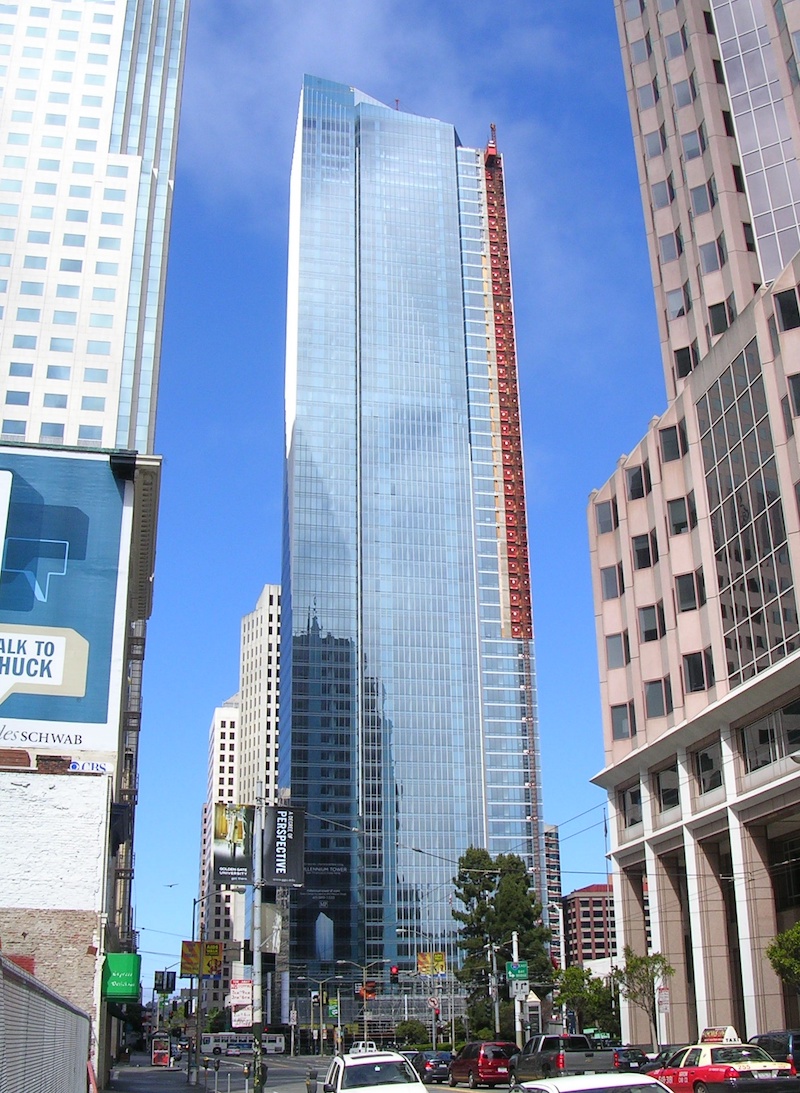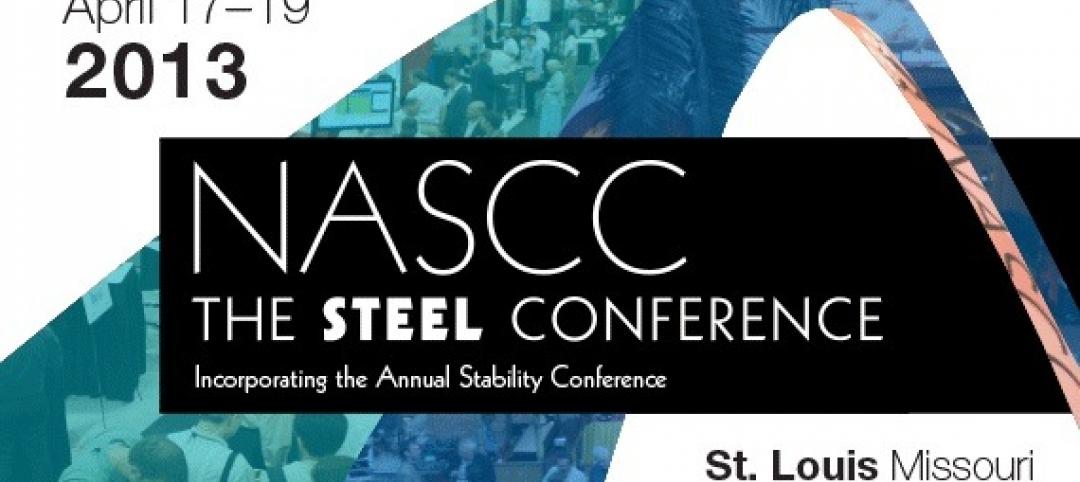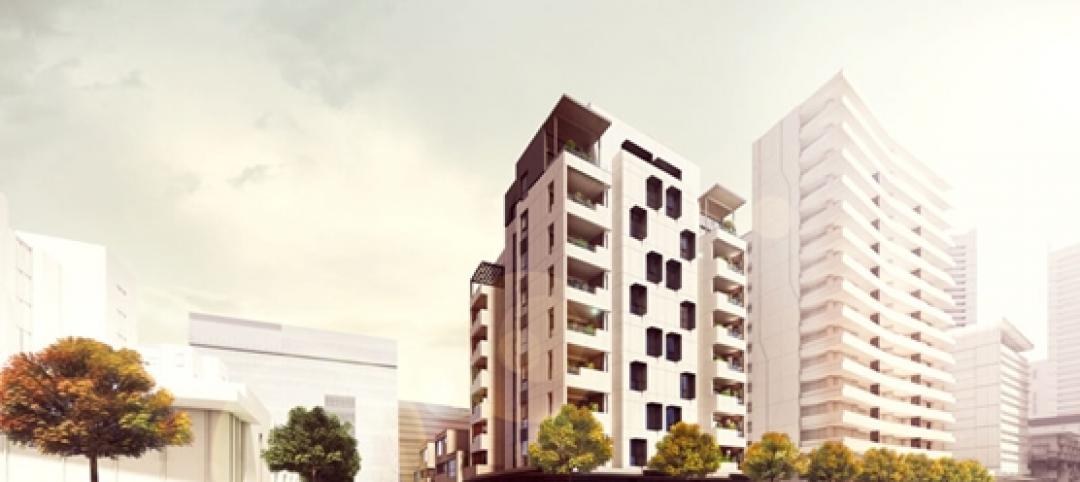When residents of San Francisco’s Millennium Tower plunked down the cash (sometimes as much as $10 million) to live the 58-story building, they were probably expecting their new home to be packed with amenities and luxuries to make their lives as easy as possible. But the odds are, what they weren’t expecting was the need to question whether or not their new living arrangements were safe. But that is exactly what many residents are beginning to do after the tower has sunk 16 inches since its completion in 2009. The tower has also tilted by two inches at the base and about 6 inches at the top.
According to sanfrancisco.cbslocal.com, a spokesman for Millennium Partners, the building’s developer, says some sinking was expected, but the 16 inches is almost three times more than what was originally predicted. Even so, the spokesman says the seismic performance has not been affected and the leaning and sinking does not represent a safety risk.
Millennium Partners is blaming the issue on the Transbay Joint Powers Authority, saying the construction of their new rail terminal is to blame. To build the terminal, Transbay dug a 60-foot hole to create a dry construction site and pumped out millions of gallons of groundwater, which compressed and weakened the soil under Millennium Tower.
Transbay Joint Powers Authority, however, is pointing the finger back at Millennium Partners, saying the building had already sunk 10 inches before construction on the terminal even began. They say the real reason for the issue is due to Millennium Partners cutting corners to save money. Instead of driving piles about 200 feet down into bedrock, they were instead driven 60 to 90 feet down into dense sand. The transit authority released a statement saying the building would not be tilting today if it had been anchored to bedrock.
Millennium Partners spokesman says the building was built correctly and other buildings in the area, such as the Intercontinental and St. Regis hotels, have similar foundations.
While safety is a major concern to residents, many are also worried about the issue affecting property values. To this point, the cracks that have appeared in the walls due to the building settling have all appeared in the parking garage, and no damage has occurred to any of the units.
*Update* (Feb. 6, 2017)
Over the past few months, things have certainly not gotten any better for the ailing tower or its frsutrated residents. According to experts that have continued to do site inspections, Millennium Tower is still safe to live in, but that hasn't stopped a group of more than 20 residents from filing multiple lawsuits against Millennium Partners, the City of San Francisco, and the Transbay Joint Powers Authority (TJPA).
According to the Denver Post, the 20 or so residents, who collectively paid around $75 million for their condos, allege that Millennium Partners knew the building had sunk 8.3 inches into the ground as early as 2009, just one year after the building was completed. Furthermore, they believe Millennium Partners hid the building’s faulty structure from buyers, saying the city’s administrators also helped to conceal the engineering flaws. Both Millennium Partners and the city deny the allegations.
The TJPA has also been named in the residents’ suit due to the construction of the new rail terminal. If the TJPA is found to be at fault, San Francisco taxpayers may find themselves on the hook for covering the building’s repair costs. The TJPA has also denied the allegations.
Another development has arisen that may add to the collective headache of Millennium Tower residents. As the Denver Post reports, Millennium Partners is insured to cover around $100 million in damages caused by settlement or construction defects with the policy split among several insurers. The building’s architect, structural engineer, and general contractor hold ancillary policies worth another $50 million to $100 million. The problem is, rectifying the problems plaguing the ailing tower could cost much more than that amount.
And if that isn’t bad enough, the coverage may not even be available under the liability policy. There is a possibility coverage has been voided by the flaws in the building.
As the building continues to lean and responsibility for the failure continues to get passed around, any possible solutions for Millennium Tower grow more and more complicated.
Related Stories
| May 1, 2013
World’s tallest children’s hospital pushes BIM to the extreme
The Building Team for the 23-story Lurie Children’s Hospital in Chicago implements an integrated BIM/VDC workflow to execute a complex vertical program.
| Apr 19, 2013
7 hip high-rise developments on the drawing board
Adrian Smith and Gordon Gill's whimsical Dancing Dragons tower in Seoul is among the compelling high-rise projects in the works across the globe.
| Mar 29, 2013
Top industry professionals to receive awards at NASCC: The Steel Conference
On April 17, Michael F. Engestrom, Dann H. Hall, Michael A. West, Stephen A. Mahin, Wallace W. Sanders, Jr., Mark V. Holland, Steven C. Ball, Rafael Sabelli, Judy Liu and William J. Wright will be recognized by the American Institute of Steel Construction (AISC) for their exceptional contributions to the advancement of the structural steel design and construction industry.
| Mar 29, 2013
Shenzhen projects halted as Chinese officials find substandard concrete
Construction on multiple projects in Guangdong Province—including the 660-m Ping'an Finance Center—has been halted after inspectors in Shenzhen, China, have found at least 15 local plants producing concrete with unprocessed sea sand, which undermines building stabity.
| Mar 14, 2013
25 cities with the most Energy Star certified buildings
Los Angeles, Washington, D.C., and Chicago top EPA's list of the U.S. cities with the greatest number of Energy Star certified buildings in 2012.
| Feb 28, 2013
Lend Lease builds world's tallest timber apartment building
Construction giant Lend Lease recently put the finishing touches on Forté, a 10-story apartment complex in Melbourne, Australia's Victoria Harbour that was built entirely with cross laminated timber (CTL) technology.
| Feb 21, 2013
AIA College of Fellows awards 2013 Latrobe Prize for 'The City of 7 Billion'
The American Institute of Architects (AIA) College of Fellows has awarded the 2013 Latrobe Prize of $100,000 for the proposal, “The City of 7 Billion.”
| Feb 21, 2013
Holl videos discuss design features of Chengdu ' Porosity Block' project
Architect Steven Holl has released two short films describing the development of Sliced Porosity Block in Chengdu, China.
| Feb 21, 2013
Construction team chosen for world's tallest building in Jeddah, Saudi Arabia
Construction team chosen for world's tallest building in Jeddah, Saudi Arabia.
| Feb 17, 2013
Pakistan to get world's tallest tower in $45 billion deal
Newly signed mega deal will fund construction of several massive developments in Karachi, including a mixed-use tower that will dwarf the Burj Khalifa.

















